Abstract
During a laboratory study of diarrhoea in a large urban area during the years 1953-68, 5319 Sonne dysentery infections in 2620 households and six cases of Flexner dysentery in five households were confirmed. The annual incidence per 10,000 population fluctuated between 2 and 31 with an average of 12.
Shigella sonnei was found in 10% of new cases of diarrhoea investigated. Plural infections were found in 58% of the households studied and 30% of all contacts examined were shown to be infected. Among these contacts the infection rate was higher for children (42%) than adults (20%), and higher for adult females (24%) than males (16%). The duration of infection was under 2 weeks in nearly half the index cases followed up and longer than 2 months in only 3%. Intermittent excretion was observed in 15%. Repeated Sonne dysentery infection and illness was observed after intervals as short as 5 months. Antibiotic sensitivity was recorded after 1955 and colicine typing after 1960. Changes in antibiotic sensitivity were noted. Children of primary-school age were most susceptible to Sonne dysentery, but symptoms in ill cases were as severe in adults as in children. During years of high incidence cases were concentrated within a small number of primary schools.
Sh. sonnei infections were compared with salmonella infections studied concurrently. Sonne dysentery was a winter disease and most cases were under 11 years old, and case-to-case infection was the usual means of spread. Salmonellosis was prevalent in summer and affected nearly as many adults as children, often persons sharing an article of food. It was more prolonged and severe than Sonne dysentery, but less infectious. In all these respects S. typhimurium occupied an intermediate place between Sonne dysentery and `other salmonellas'.
Full text
PDF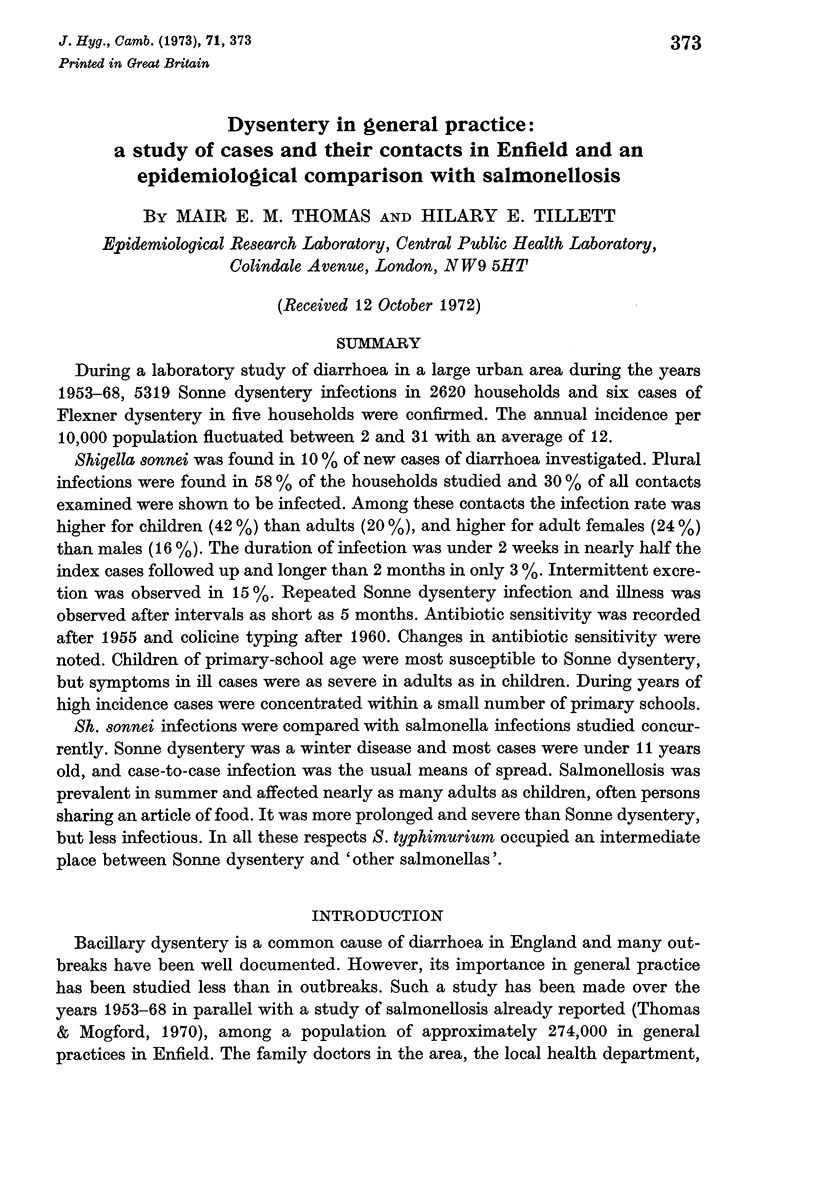
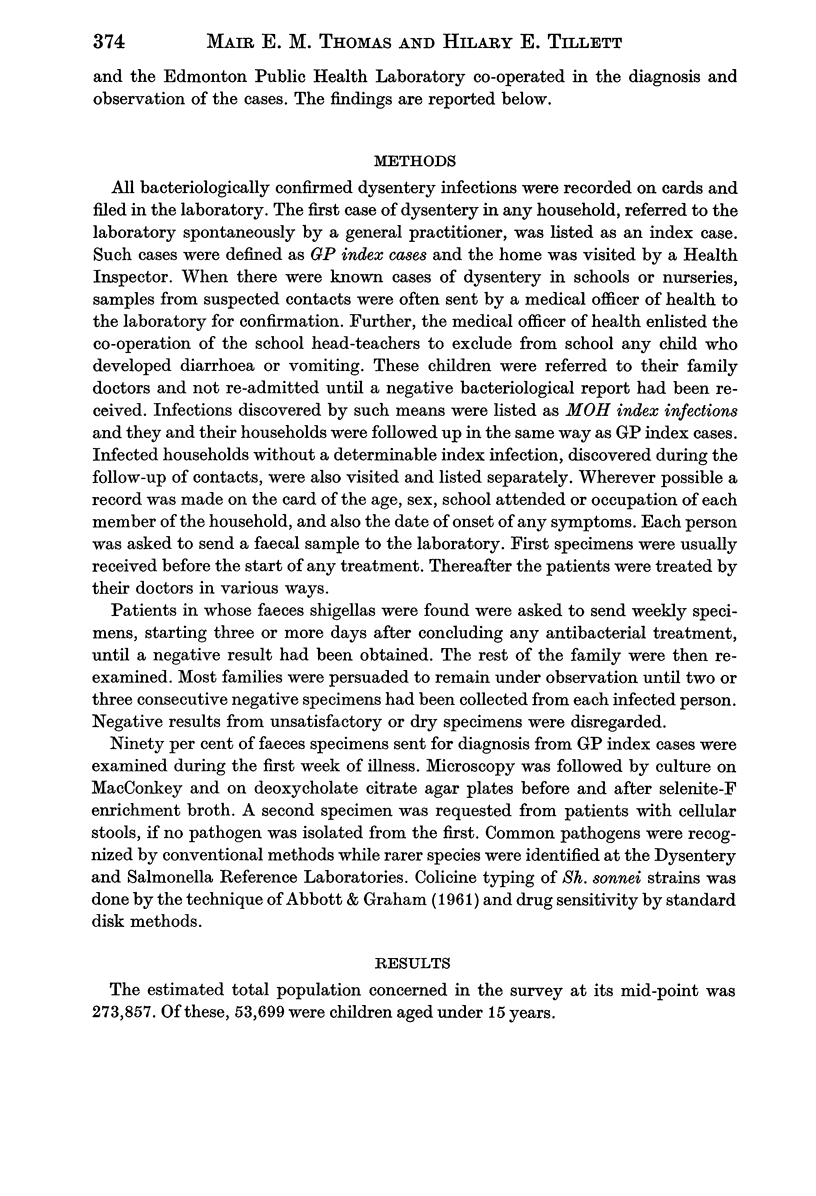
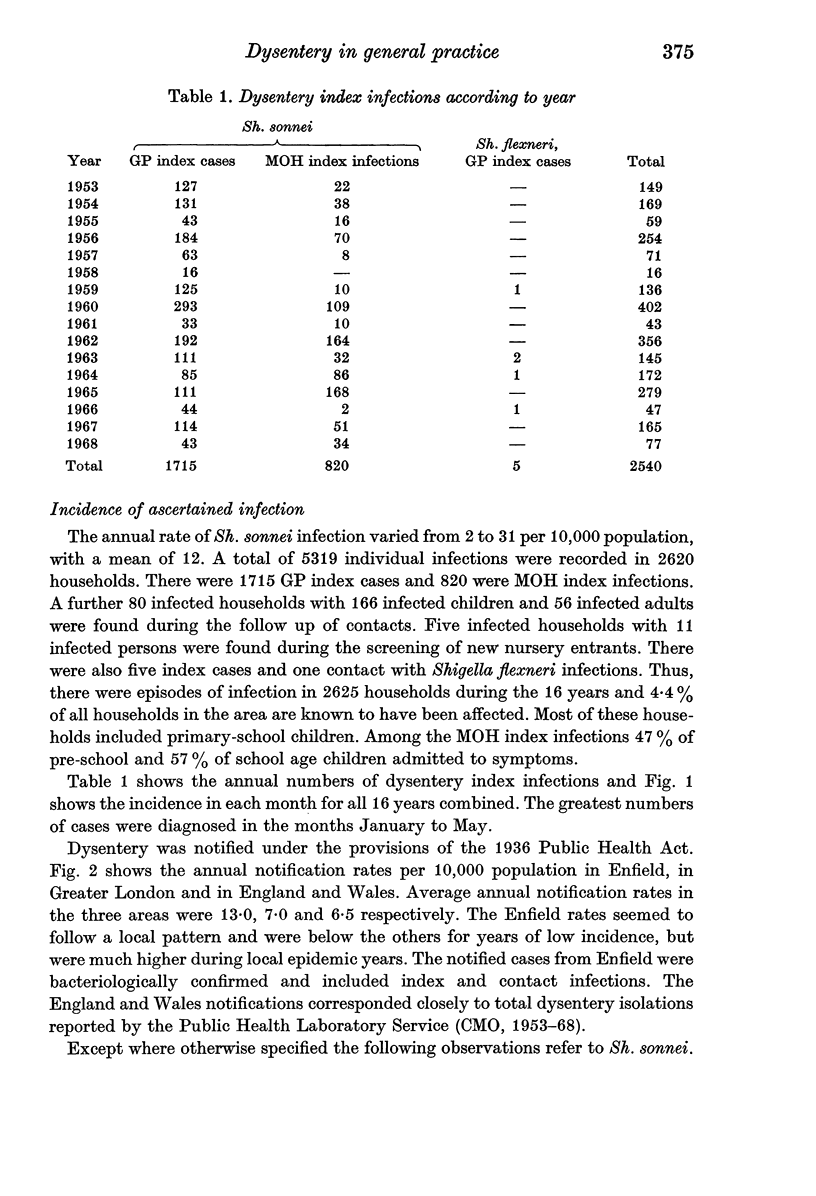
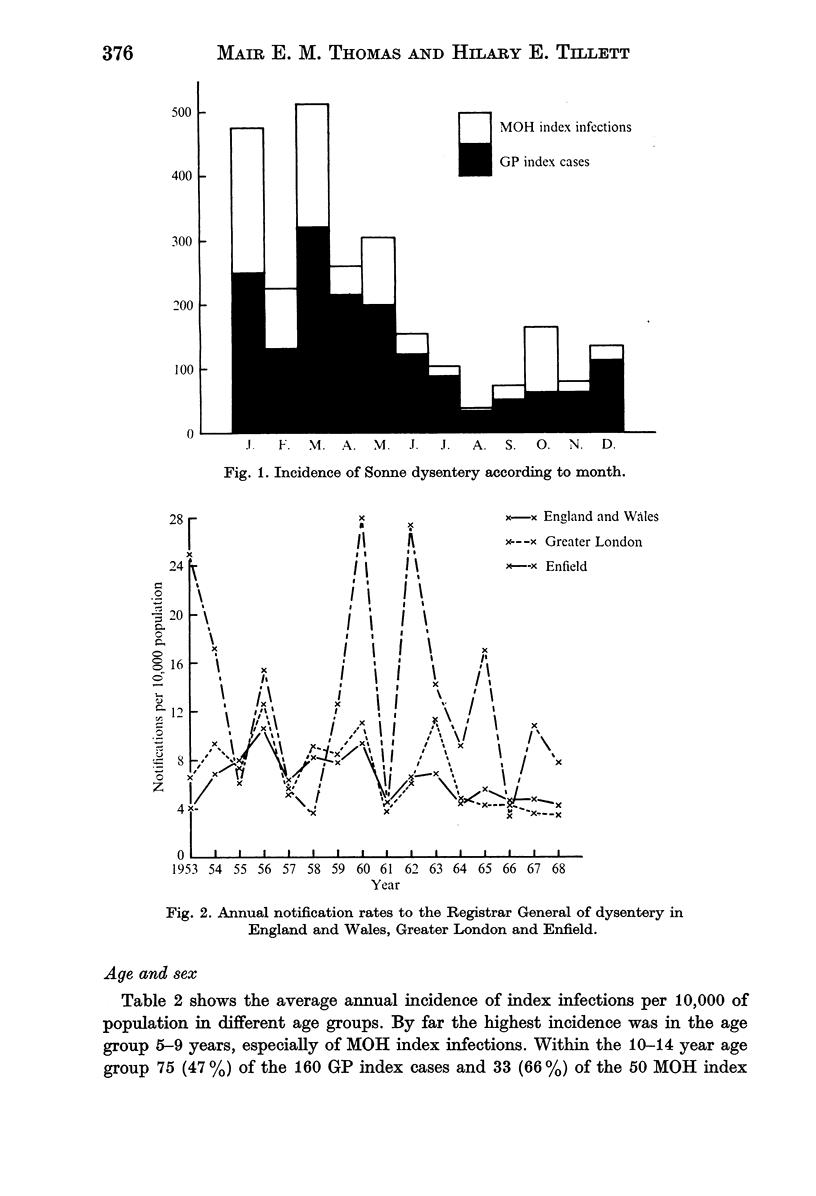
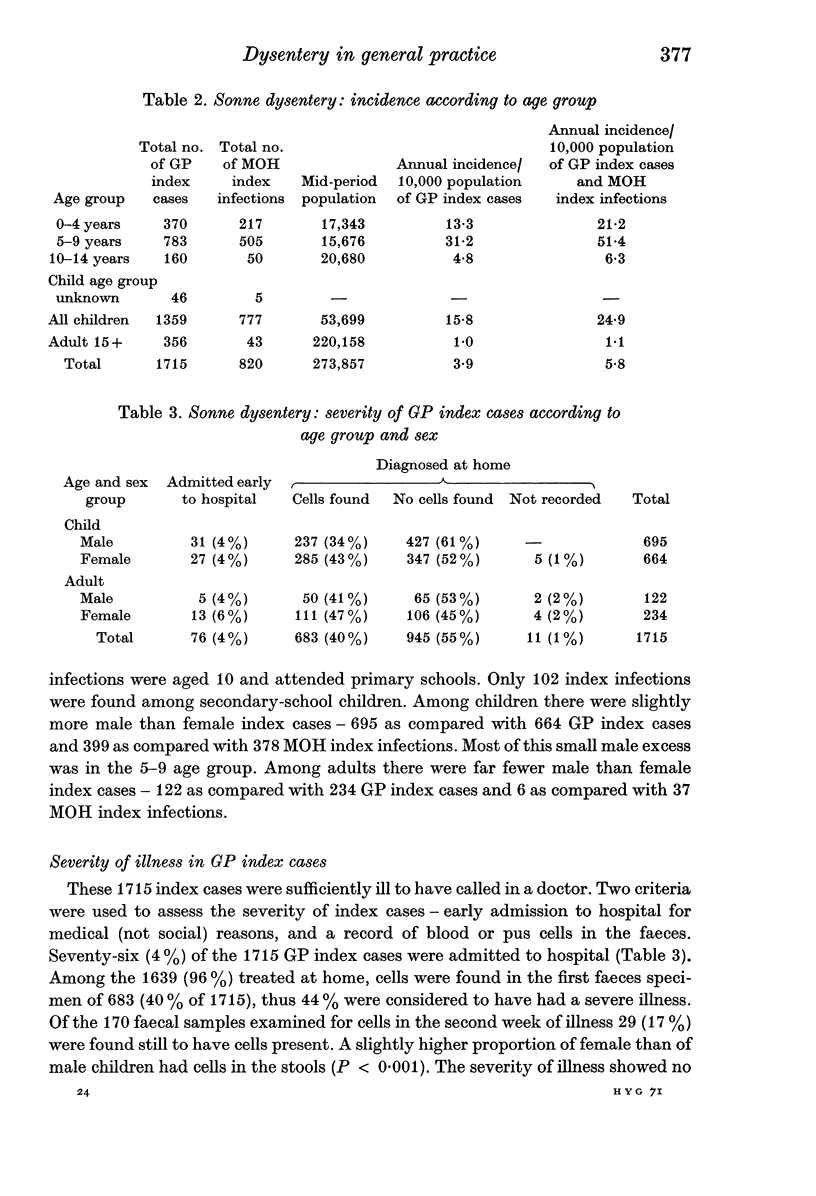
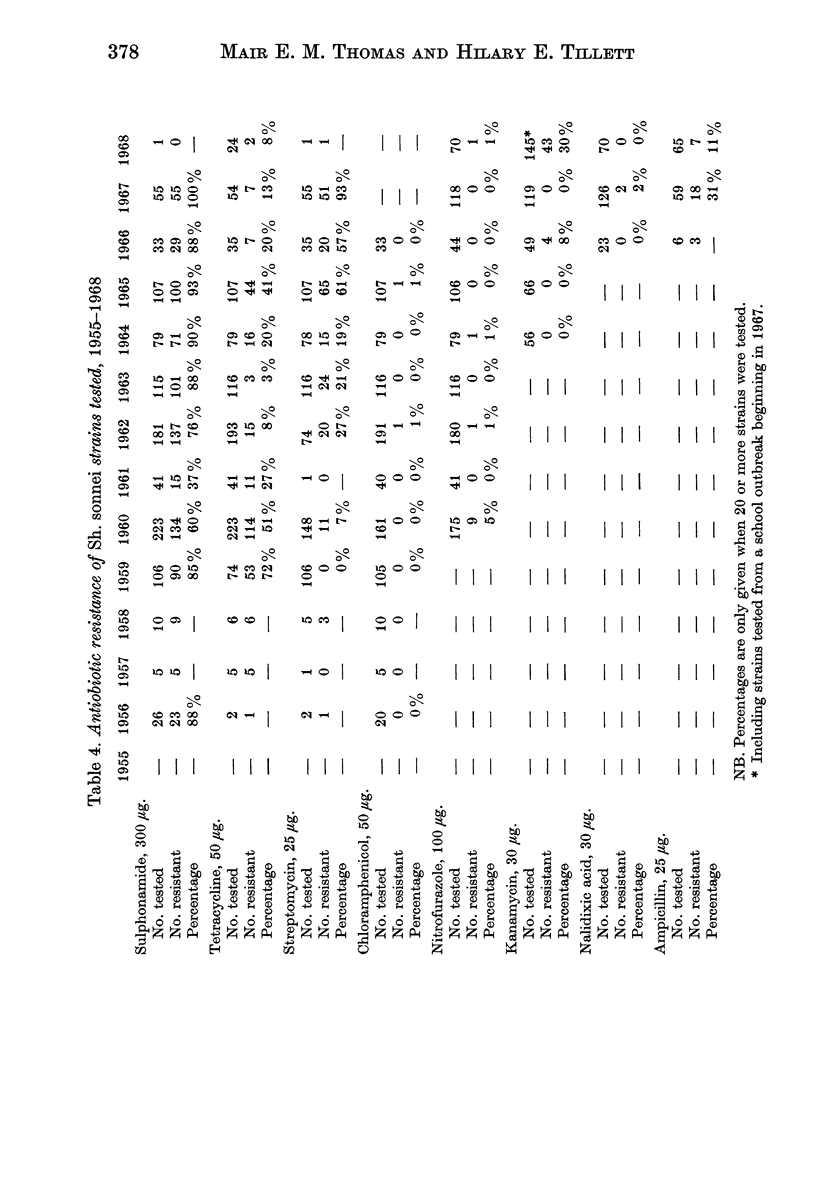
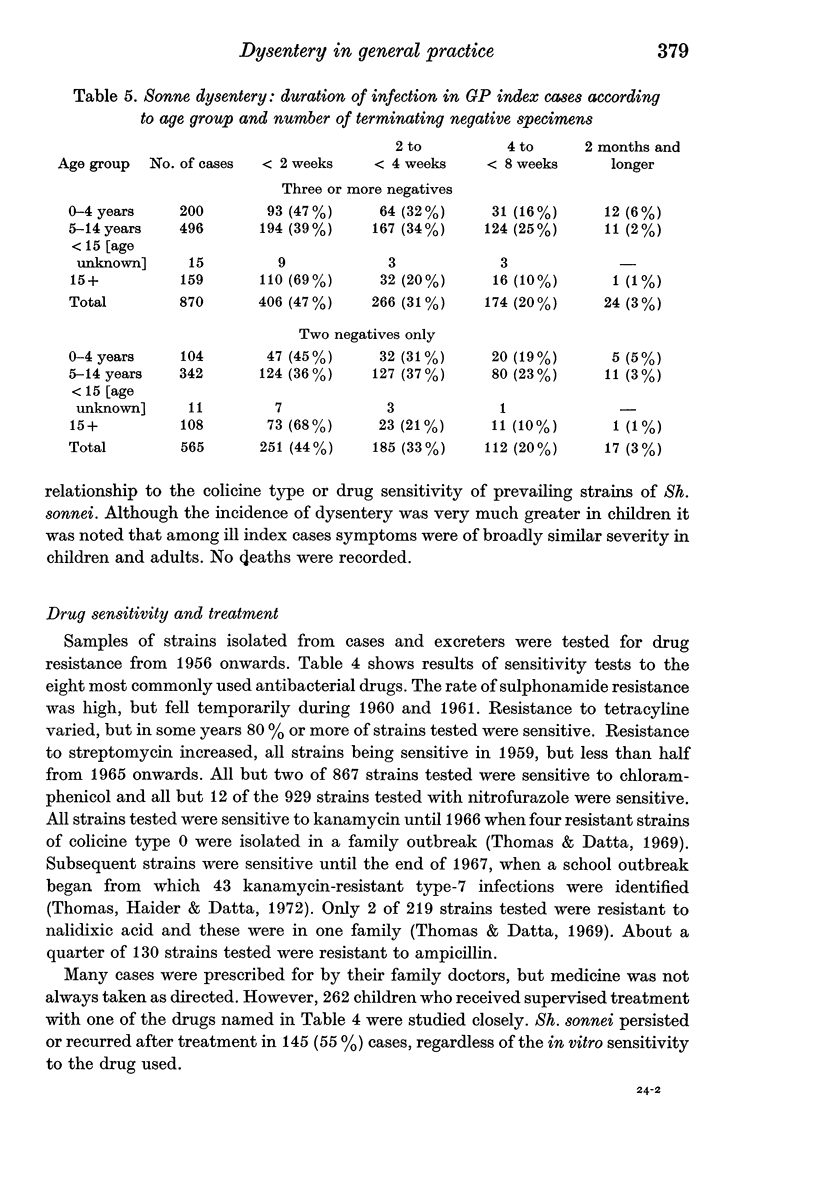
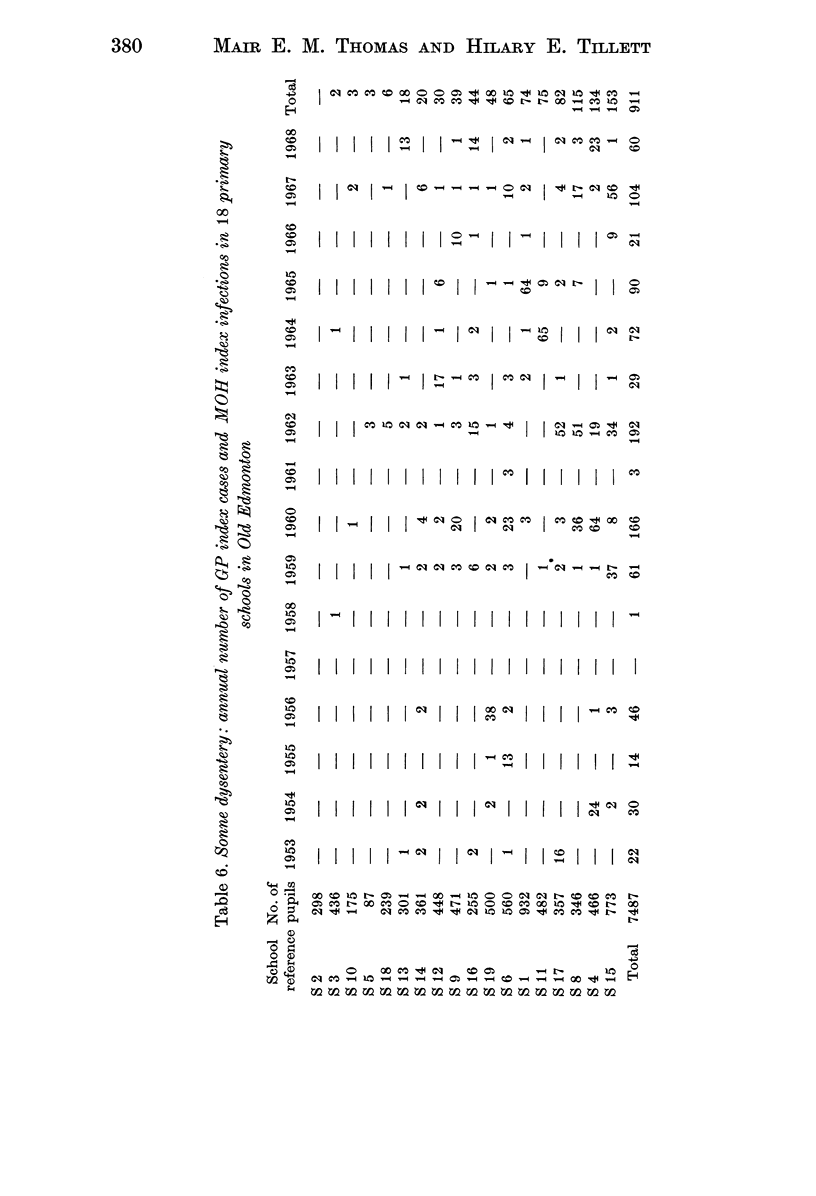
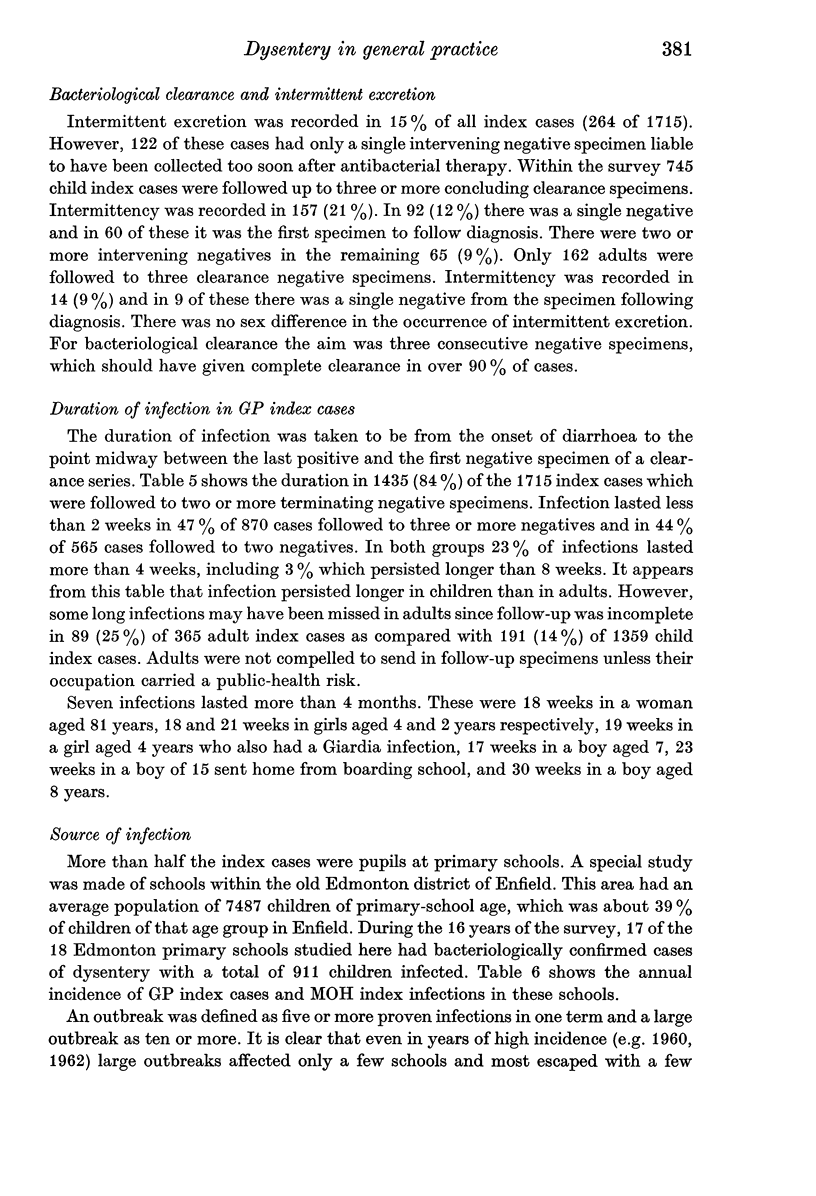
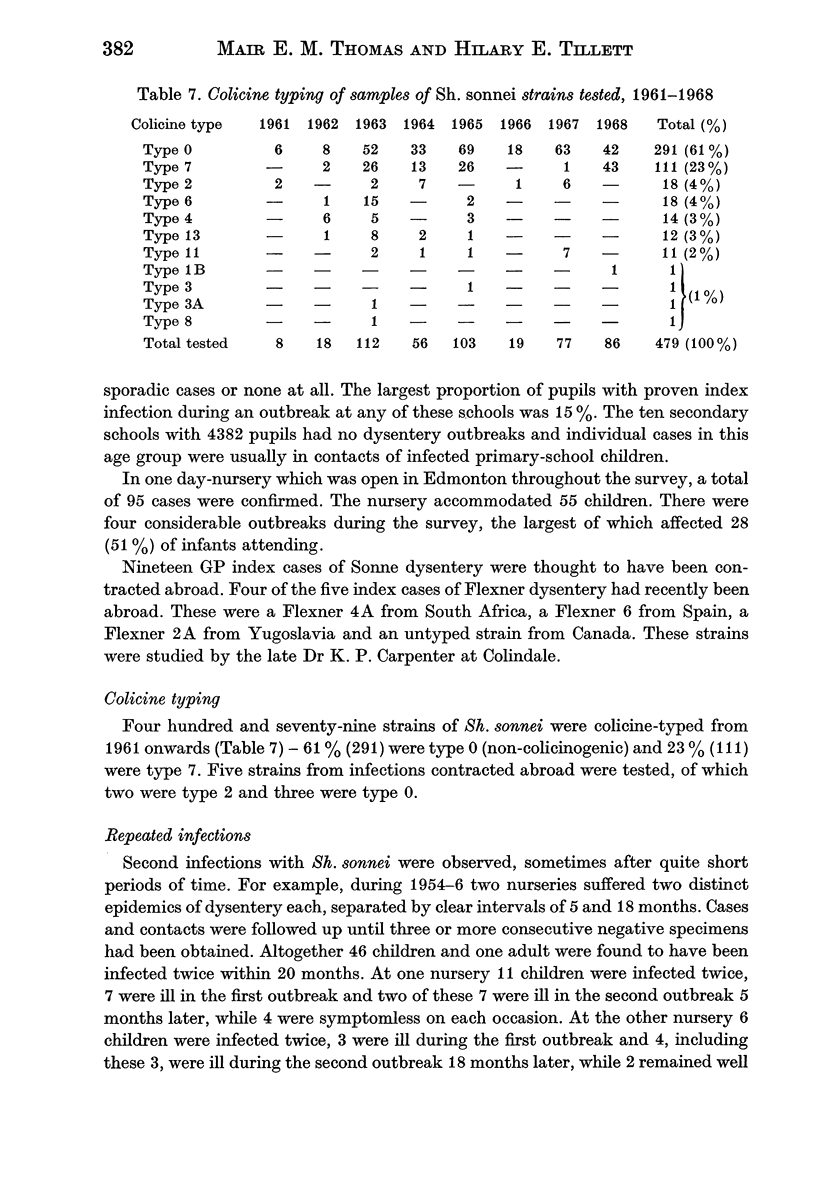
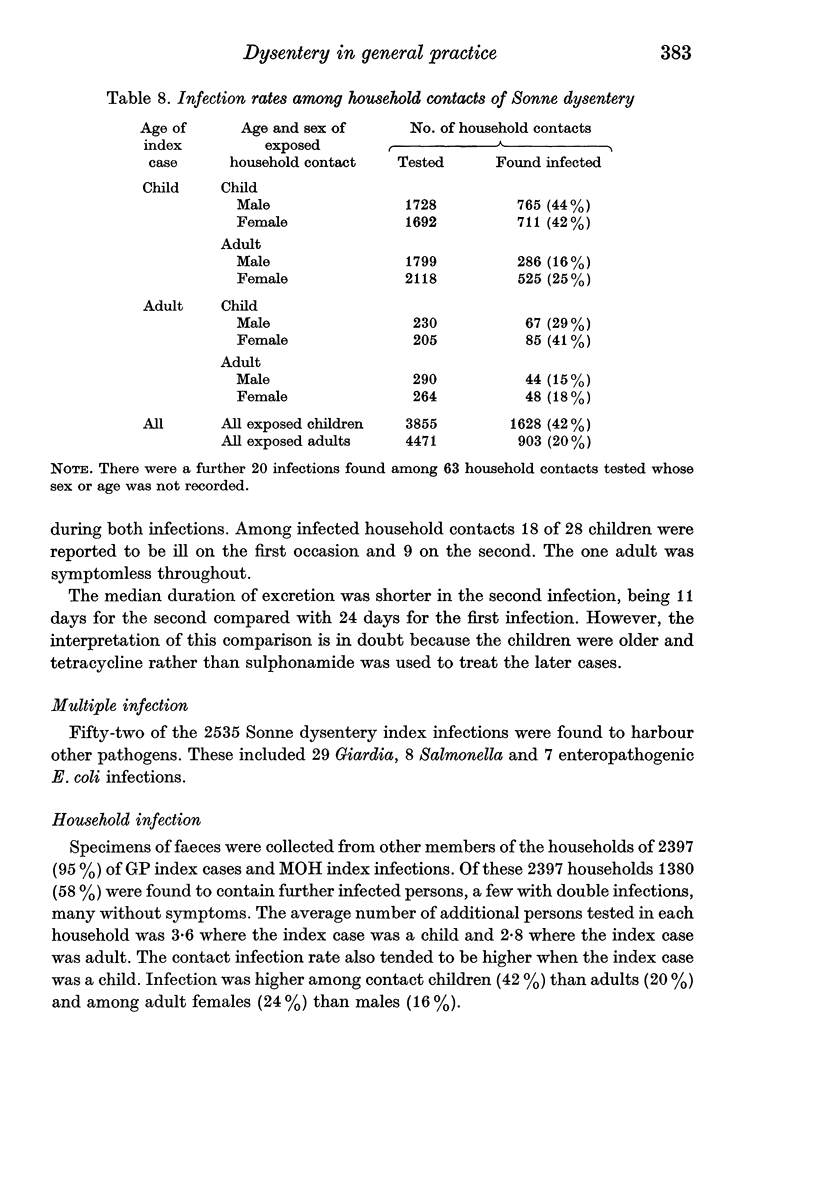
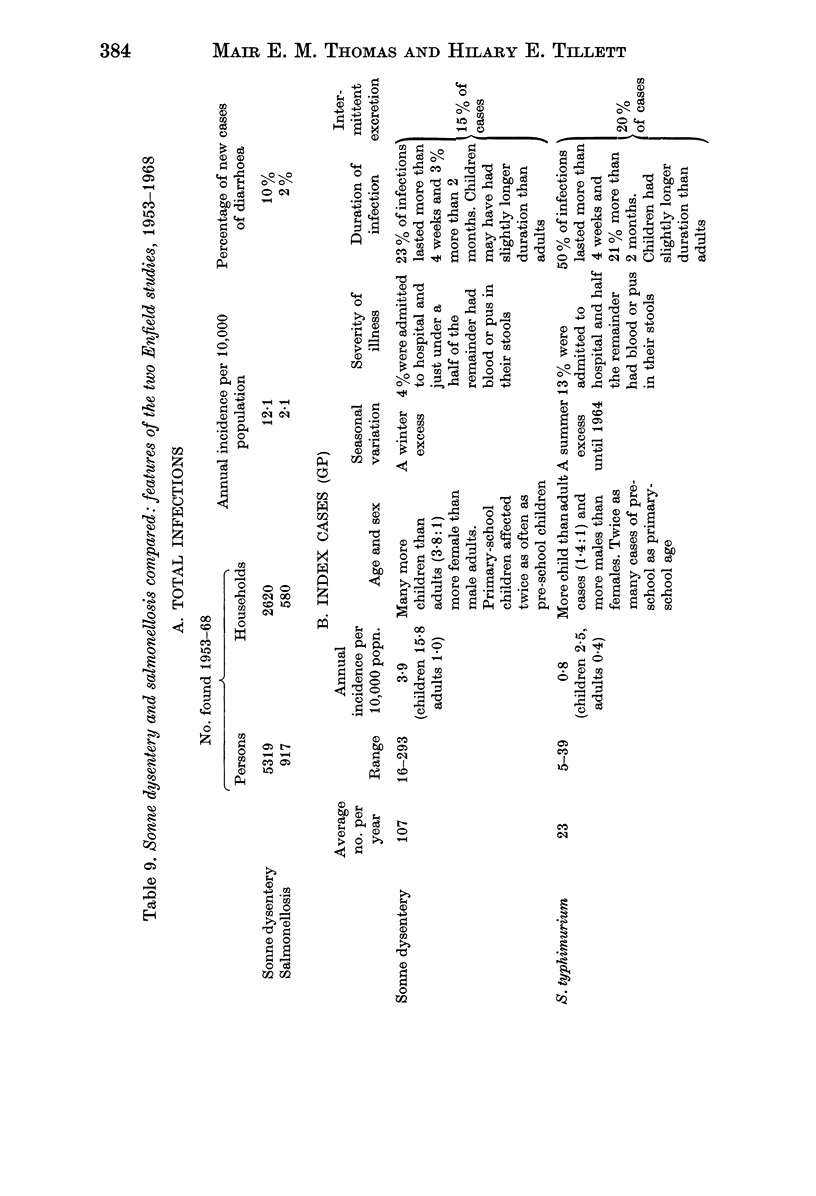
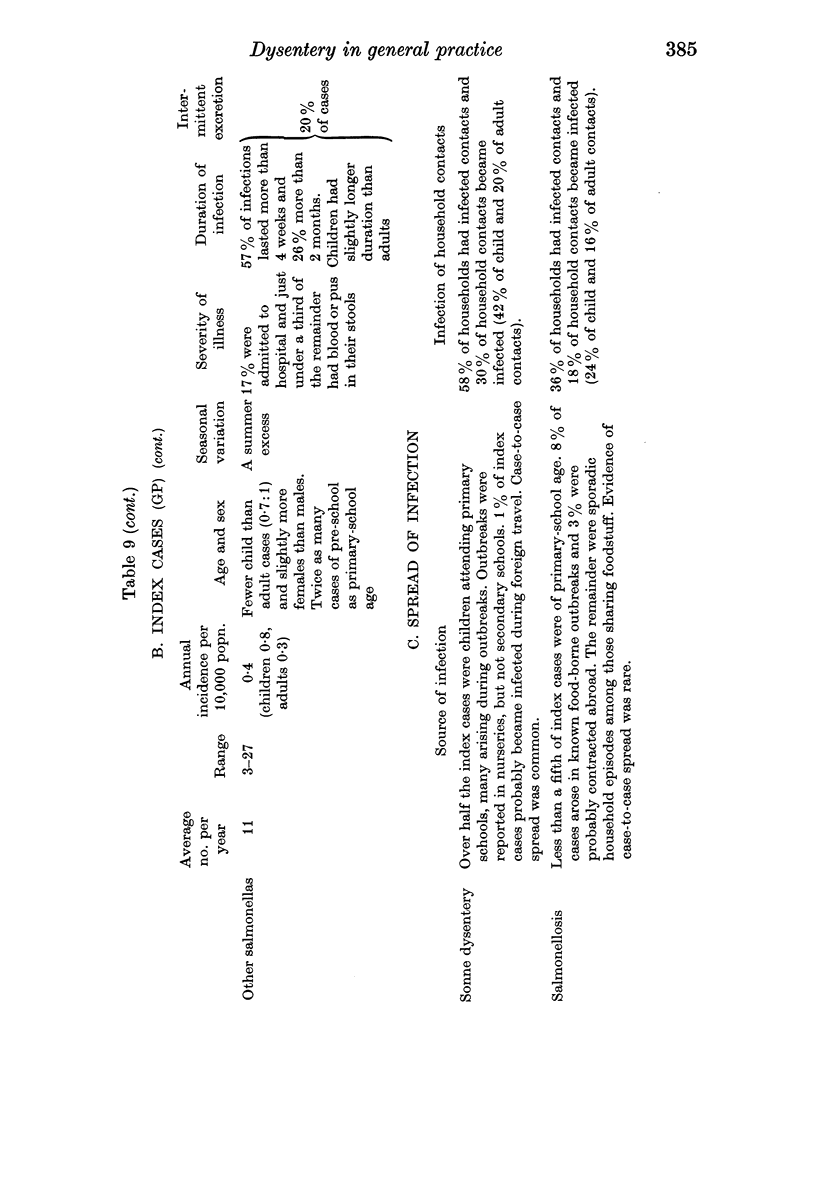
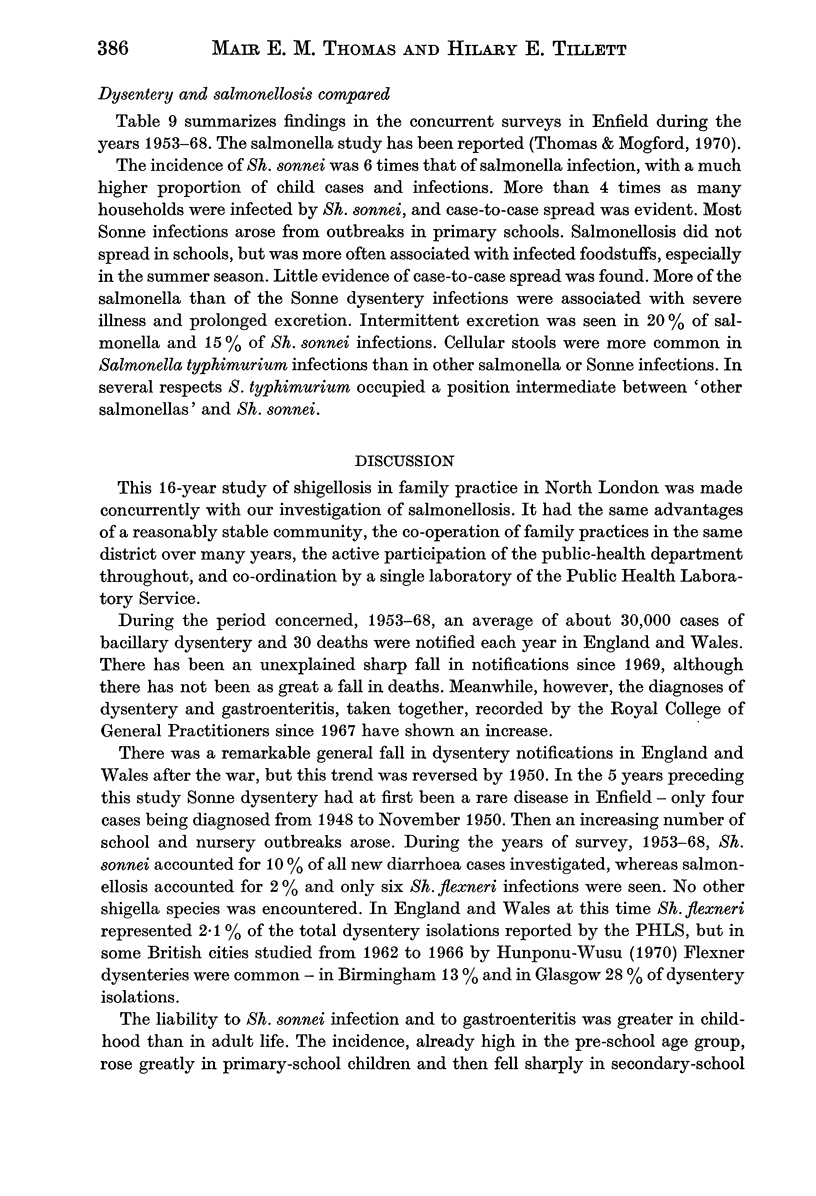
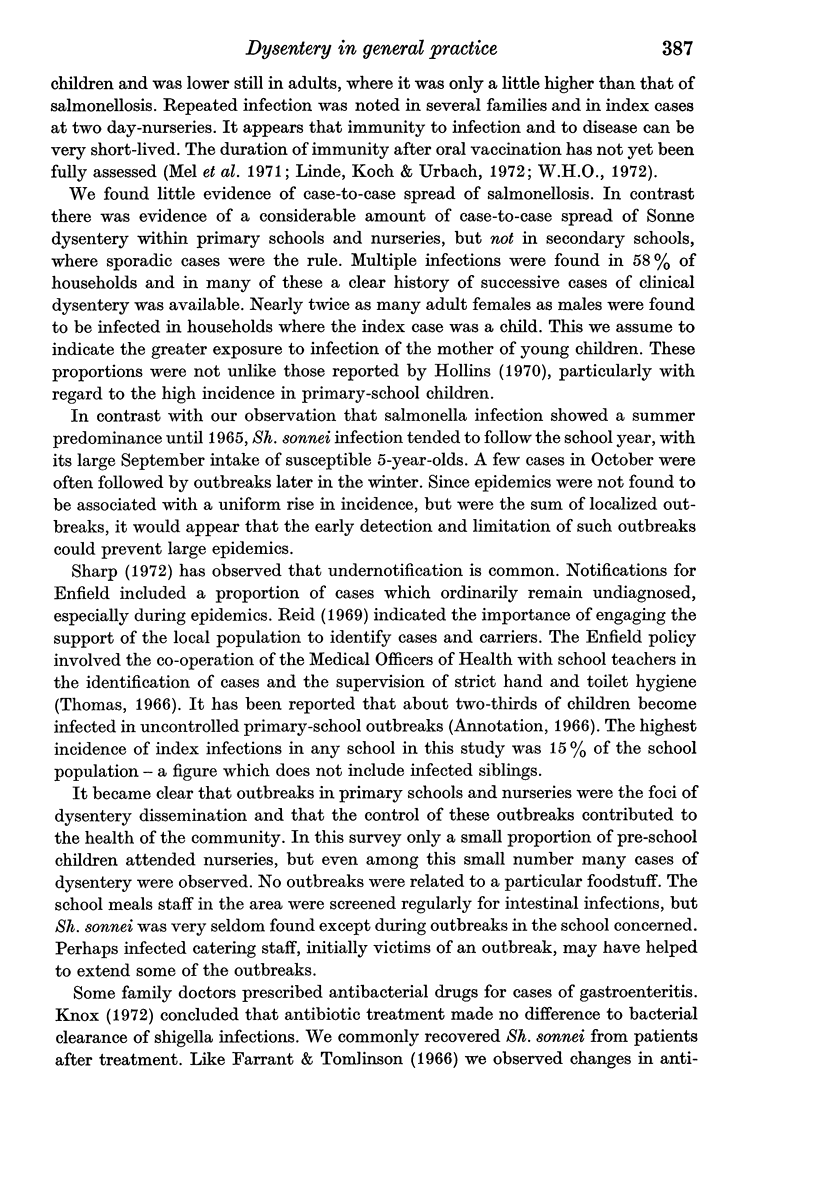
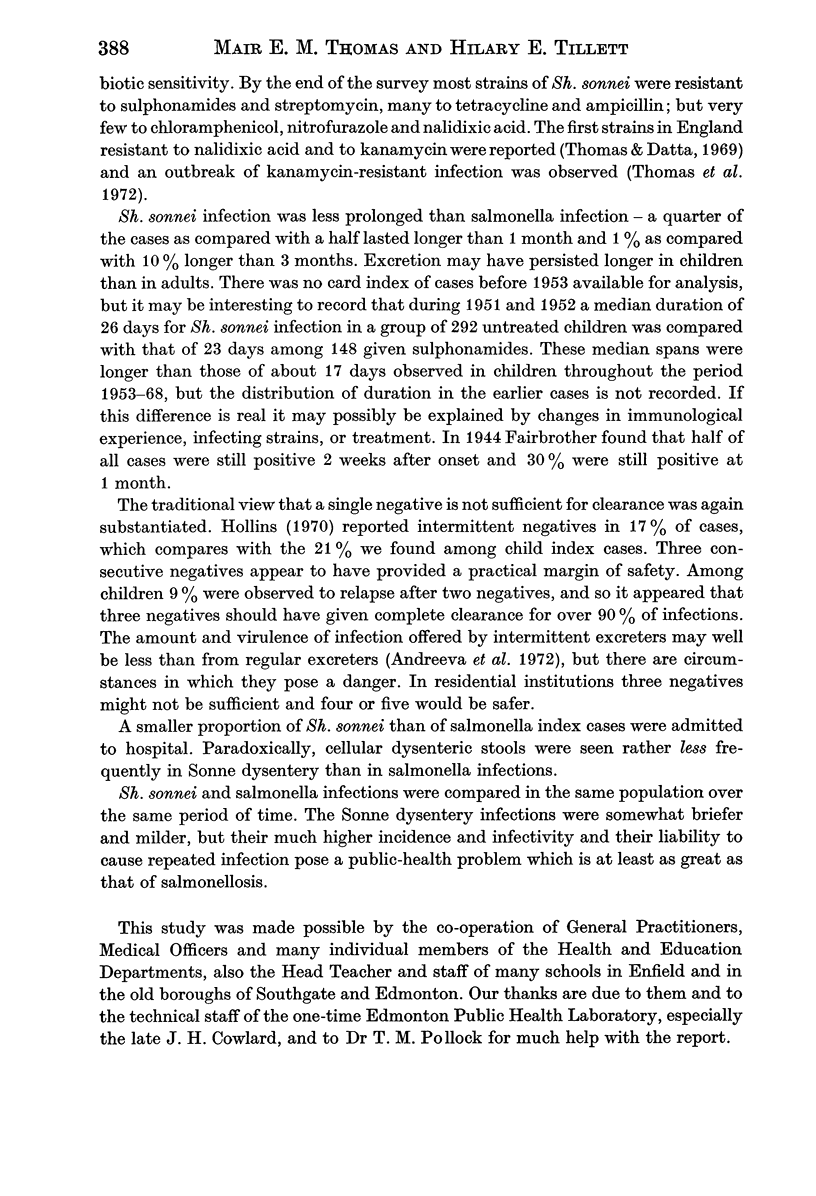
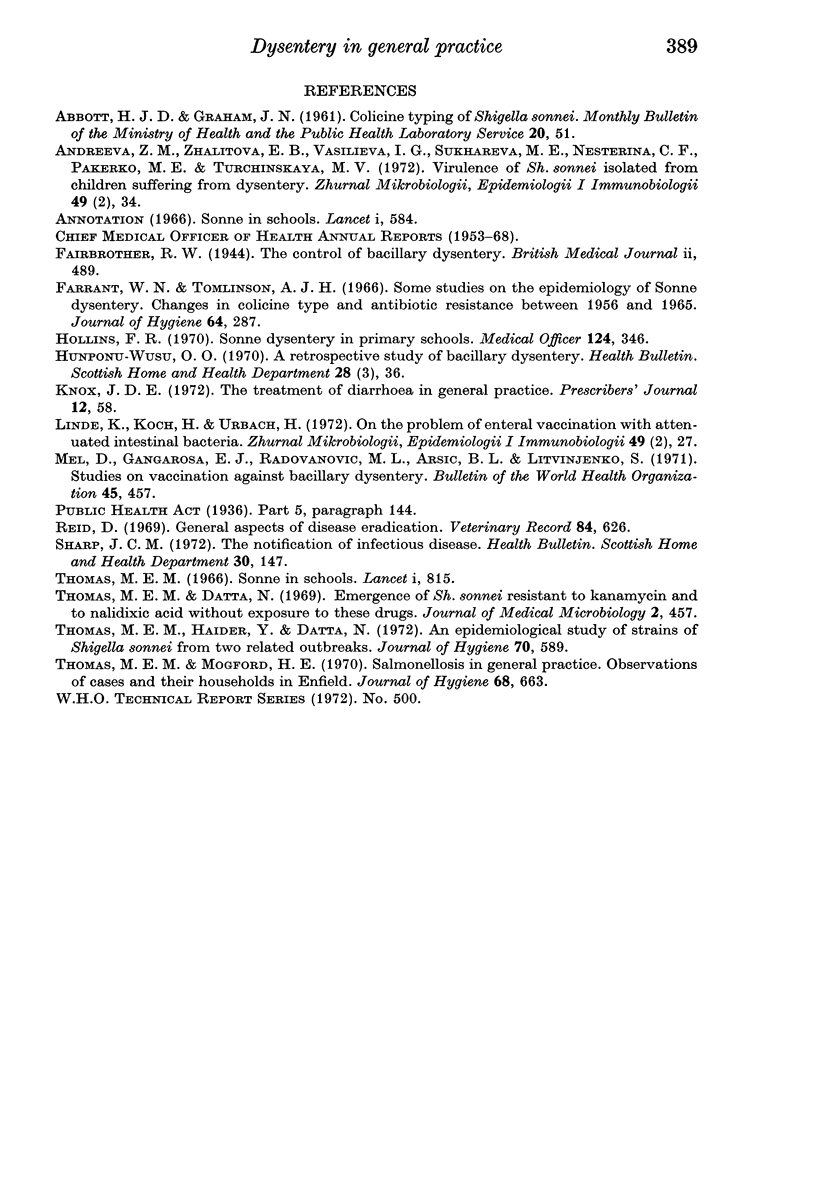
Selected References
These references are in PubMed. This may not be the complete list of references from this article.
- ABBOTT J. D., GRAHAM J. M. Colicine typing of Shigella sonnei. Mon Bull Minist Health Public Health Lab Serv. 1961 Mar;20:51–58. [PubMed] [Google Scholar]
- Farrant W. N., Tomlinson A. J. Some studies on the epidemiology of Sonne dysentery. Changes in colicine type and antibiotic resistance between 1956 and 1965. J Hyg (Lond) 1966 Sep;64(3):287–303. doi: 10.1017/s0022172400040572. [DOI] [PMC free article] [PubMed] [Google Scholar]
- Hunponu-Wusu O. O. A retrospective study of bacillary dysentery. Health Bull (Edinb) 1970 Jul;28(3):36–39. [PubMed] [Google Scholar]
- Mel D., Gangarosa E. J., Radovanovic M. L., Arsic B. L., Litvinjenko S. Studies on vaccination against bacillary dysentery. 6. Protection of children by oral immunization with streptomycin-dependent Shigella strains. Bull World Health Organ. 1971;45(4):457–464. [PMC free article] [PubMed] [Google Scholar]
- Reid D. General aspects of disease eradication. Vet Rec. 1969 Jun 21;84(25):626–627. doi: 10.1136/vr.84.25.626. [DOI] [PubMed] [Google Scholar]
- Sharp J. C. The notification of infectious disease. Health Bull (Edinb) 1972 Apr;30(2):147–153. [PubMed] [Google Scholar]
- Thomas M. E., Datta N. Emergence of Shigella sonnei resistant to kanamycin and to nalidixic acid, without exposure to these drugs. J Med Microbiol. 1969 Nov 4;2(4):457–461. doi: 10.1099/00222615-2-4-457. [DOI] [PubMed] [Google Scholar]
- Thomas M. E., Haider Y., Datta N. An epidemiological study of strains of Shigella sonnei from two related outbreaks. J Hyg (Lond) 1972 Sep;70(3):589–596. doi: 10.1017/s0022172400063166. [DOI] [PMC free article] [PubMed] [Google Scholar]
- Thomas M. E., Mogford H. E. Salmonellosis in general practice. Observations of cases and their household in Enfield. J Hyg (Lond) 1970 Dec;68(4):663–671. doi: 10.1017/s0022172400042601. [DOI] [PMC free article] [PubMed] [Google Scholar]


